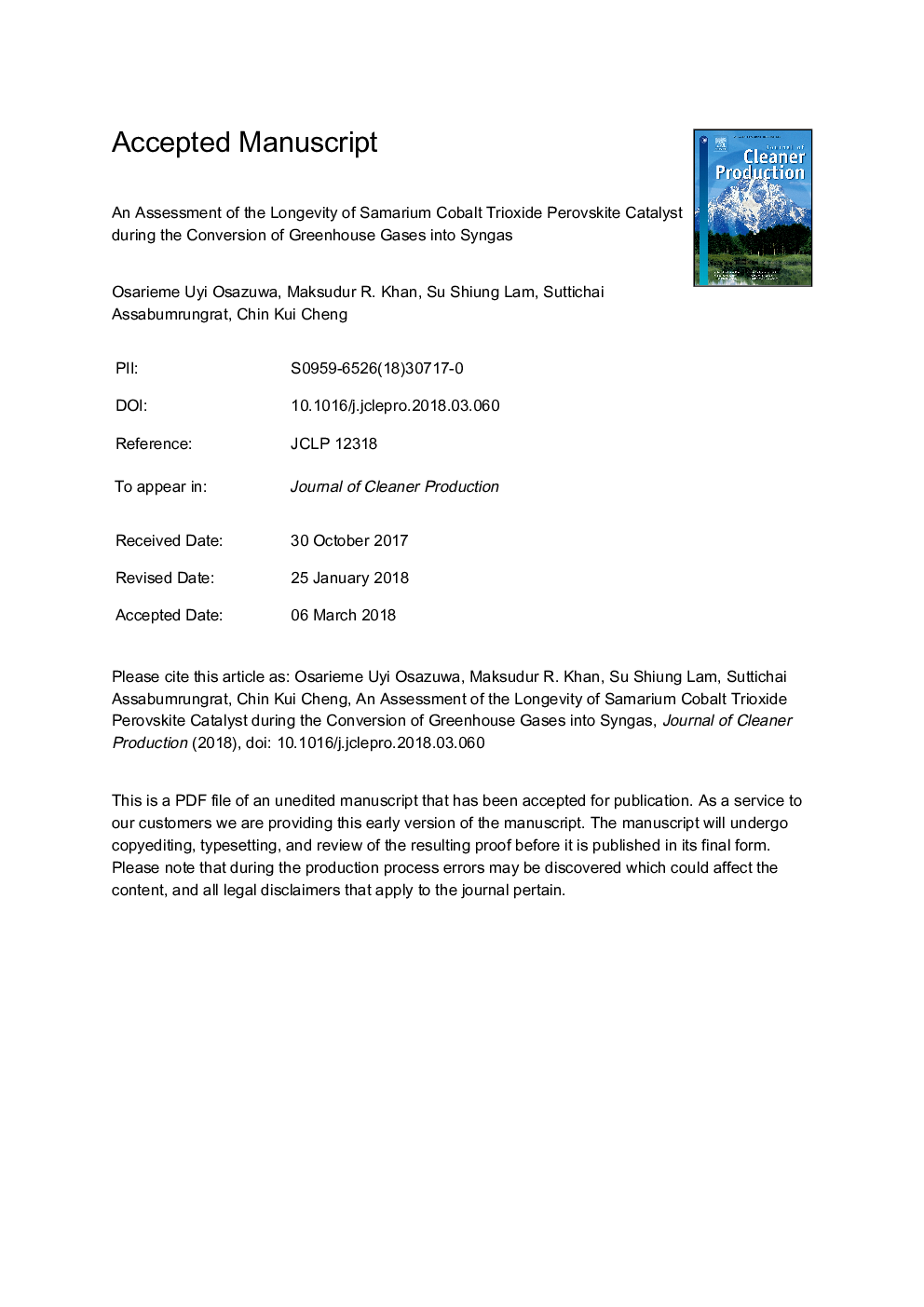| Article ID | Journal | Published Year | Pages | File Type |
|---|---|---|---|---|
| 8096510 | Journal of Cleaner Production | 2018 | 30 Pages |
Abstract
Catalytic carbon dioxide (CO2) reforming of methane (CH4) has gained interest because it reduces the amount of greenhouse gases in the environment. In addition, the products from the reforming process are utilized as feedstock in the Fischer-Tropsch synthesis. However, rapid catalyst deactivation and sintering due to carbon deposition often accompany the CO2 reforming of CH4 reaction. In this study, samarium cobalt trioxides perovskite catalyst was synthesized and employed as catalyst in a 72â¯h longevity test conducted at 1073â¯K using CO2 to reform CH4 with gas-hourly-space velocity of 30,000 hâ1. Feed ratios (0.5-2.0) were varied and excellent catalytic longevity, maximum conversion (above 90%) and yield (above 60%), were obtained at 1.0 feed ratio. Physicochemical properties of the fresh catalyst revealed uniform metallic particles distribution on a single phase perovskite structure, while spent catalyst showed evidence of carbon which was graphitic at 0.5-1.33 feed ratio with CC and CH bonds, and formed contaminant of carbon at 2.0 feed ratio with OCO bond.
Related Topics
Physical Sciences and Engineering
Energy
Renewable Energy, Sustainability and the Environment
Authors
Osarieme Uyi Osazuwa, Maksudur R. Khan, Su Shiung Lam, Suttichai Assabumrungrat, Chin Kui Cheng,
